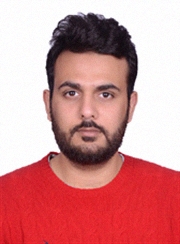Tutor HuntResources Business Studies Resources
Product Development Processes
Product Development
Date : 12/01/2014
Author Information

Uploaded by : Hamza
Uploaded on : 12/01/2014
Subject : Business Studies
Product development has great importance for firms to survive in today's competitive marketplace. Their significance can be judged from the fact that it has shaped its way from being a strategic option to more of a requirement for organizations due to external pressures (Nijssen and Frambach, 2000), technology being one of them (Kotler, 1988, as cited in Swink, 1998). So to overcome these issues companies widely use Product Development (PD) Processes to streamline their businesses.
PD processes have a deep impact on an organization's performance (Syamil et al., 2004). The basic aim of Product Development Process is to convert customer needs into something sellable. Thus, developing high quality products in a cost efficient manner would require the use of these PD processes. Time to market is a crucial factor in the development of successful products, managing it is made possible through their use.
Various Product Development Processes are present in the world to be implemented. Numerous factors are considered on the basis of which companies adopt one of these processes. Factors that differentiate between them can be classified as Industry, Market and Development Time etc. Some of the Industry specific processes may include Pugh's Total Design for Manufacturing Industry and Spiral for the IT industry. Apart from these there are some generic processes, which can be implemented regardless of the sector. Stage Gate and Concurrent Engineering are two of these processes.
In the course of this essay three processes that are going to be discussed are as follows
1. Stuart Pugh's Total Design
2. Cooper's Stage Gate Process
3. Concurrent Engineering
Each of this process is unique in its own terms. A discussion in terms of several factors would be established after their formal introduction in the next section. This discussion would include a deep evaluation in terms of their processing style, stages, cost and nature. Similarities and differences would also be analyzed on the basis of their application in various industries
Pugh's Total Design has a central core comprising of Market, Specification, Concept Design, Detail Design, Manufacture and Sell. A mantle known as Product Design Specification (PDS) (Pugh, 1991) in return encapsulates this. These specifications act as a control for different stages of the Total Design process. PDS are developed in the light of some external technical and non--technical factors.
It is an iterative process, which means that if by any chance there is a modification in the PDS, returning to conceptual stage is necessary if factors like time and cost permit.
Every business aims to produce a product that serves the existing market and also have
some potential to create its own
market. At Market stage of the process two main factors that need to be addressed are customer needs and competitors products. Both of them provide with essential inputs for designers
in the latter stages of the process.
Irrespective of the stage PDS acts as a control for all the stages of Total Design. A deep research on several Technical and Non--Technical elements (e.g. Time Scale, Performance, Ergonomics etc.) can only result in an effective PDS. Most of the failed products are a result of inadequate research. Neglecting key elements also aids to this failure. Therefor a PDS considering all these factors is developed at the Specification Stage.
Concepts for the proposed PDS are developed at Conceptual Design stage of the process. It is necessary to put ideas on paper so that a feedback could be attained for refinement of the concept. With this different methodologies can be adopted to narrow down on the concepts and finally selecting the one, which fits the best with PDS.
To progress further down this stage, the design team should have a strong grip on the concept because an ill design can wreck a powerful concept. Furthermore, the design team should be able to analyze different technological approaches to implement the concept. This stage of the process is highly iterative as things are now considered at individual component level.
Before manufacturing is started, manufacturing processes should be laid down. If the new product is an advanced version of its ancestors then the traditional process and facility can be used. Else new processes and facility has to be designed, which can incorporate the concept of Concurrent Engineering (Pugh, 1991).
Final and foremost stage of the process is the stage at which the developed product is introduced into the market to generate revenue. Developing robust strategies for products is the most important part as weak strategies can ruin an excellent product or vice versa.
This resource was uploaded by: Hamza
